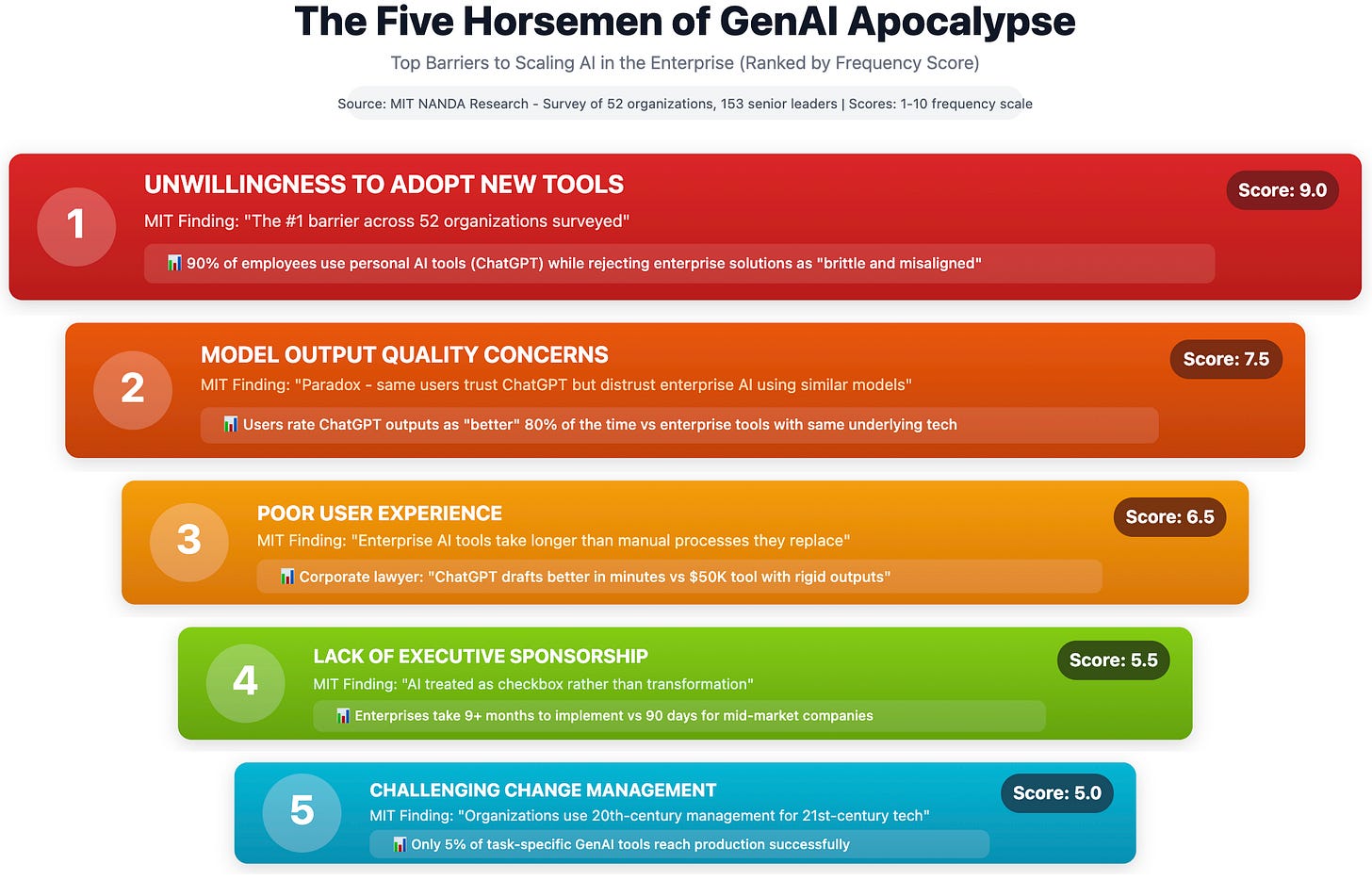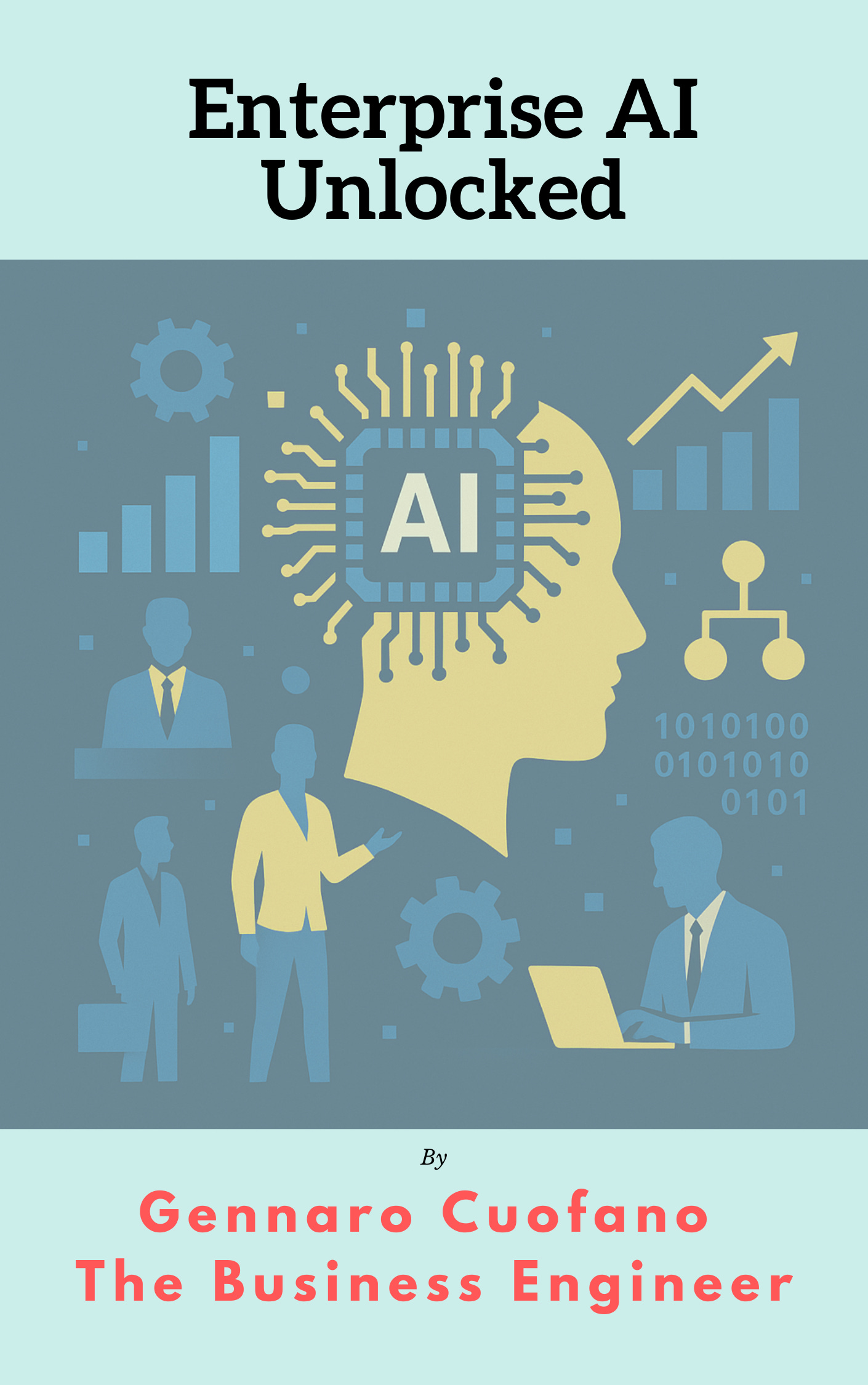Enterprise AI Unlocked
While debate rages in the industry over whether AI is “real” or just hype, the bigger picture is unfolding quietly: the web itself is becoming an agentic web, with AI emerging as the hidden infrastructure shaping every interaction and transaction.
The noise about bubbles and crashes makes for catchy headlines. A recent Fortune piece went viral not because it was accurate, but because it offered a neat story to repeat. In that sense, the reminder was useful: LLMs may be stochastic parrots, but we as humans are often social parrots—recycling whatever narrative feels convenient.
One narrative even suggested that Wall Street reacted to the MIT report on enterprise AI adoption, causing markets to wobble. That’s simply not true. Markets moved on Jerome Powell’s Jackson Hole speech about interest rates and the economic outlook.
But this is a familiar pattern in tech: sometimes we give Wall Street too much credit for caring about innovation, other times we dismiss it as clueless. It can’t be both.
Perspective is important here. We are not even three years past the launch of ChatGPT, yet people are already trying to declare verdicts on a technology cycle that will take decades to play out.
What we can say with confidence is that the MIT GenAI Divide study revealed a structural problem. Enterprises have invested $30–40 billion into GenAI, and 95% of projects so far have delivered no measurable return. But the problem isn’t with the technology.
The models are strong. The infrastructure is ready. Vendors are capable. The challenge lies in organizational design: enterprises struggling to adapt, and vendors struggling to embed into enterprise realities.
The lesson is that this isn’t an AI adoption crisis—it’s an organizational alignment challenge. The companies making progress aren’t those with the biggest budgets or the most advanced models, but those willing to rethink authority, decision-making, and how AI tools are actually used on the ground.
In my experience, successful implementation rarely depends on the tech alone. It depends on how organizations structure themselves to adopt it—and how vendors design with those realities in mind. That’s why the story is more nuanced than “95% of enterprise AI is failing.”
The truth is simpler, and more hopeful: the technology is ready, and the opportunity is enormous. The organizations that learn to align themselves with it will capture the next wave of value creation.
So let’s clarify what’s really going on.
Part I: The Five Horsemen of GenAI Apocalypse
Let's start with what's killing AI initiatives before they even have a chance to fail properly. The number one barrier isn't what you think—it's not budget, it's not technology, it's not even regulatory concerns. It's the simple, brutal fact that people don't want to use the tools being forced upon them.
The hierarchy of failure looks like this, and each level compounds the disaster of the one before it:
Unwillingness to adopt new tools sits at the top, the silent killer that nobody wants to discuss in board meetings. This isn't technophobia—these same employees are using ChatGPT on their personal devices every single day. They're rejecting enterprise tools because those tools are, to quote users, "brittle, overengineered, and completely misaligned with how we actually work."
Model output quality concerns come second, but here's the twist: the models themselves are fine. The problem is that enterprise implementations strip away everything that makes AI useful—the flexibility, the conversational nature, the ability to iterate quickly. Companies take a Ferrari engine and put it in a shopping cart, then wonder why nobody wants to drive it.
Poor user experience follows naturally. When you've spent $500,000 on an AI tool that takes longer to use than the manual process it's supposed to replace, you've not just wasted money—you've actively made your organization worse. One lawyer spent $50,000 on a specialized contract analysis tool; she consistently defaulted to ChatGPT for drafting work.
Lack of executive sponsorship reveals a darker truth: many leaders are signing checks for AI initiatives they don't understand, can't explain, and secretly hope will fail quietly enough that nobody notices. When the C-suite treats AI as a checkbox rather than a transformation, the organization responds accordingly.
Challenging change management rounds out the top five, but calling it "challenging" is like calling Mount Everest "a bit of a hill." Organizations are trying to implement 21st-century technology using 20th-century management structures, and then acting surprised when it doesn't work.
If you are a premium, paid subscriber, ask for access to the complete eBook!




